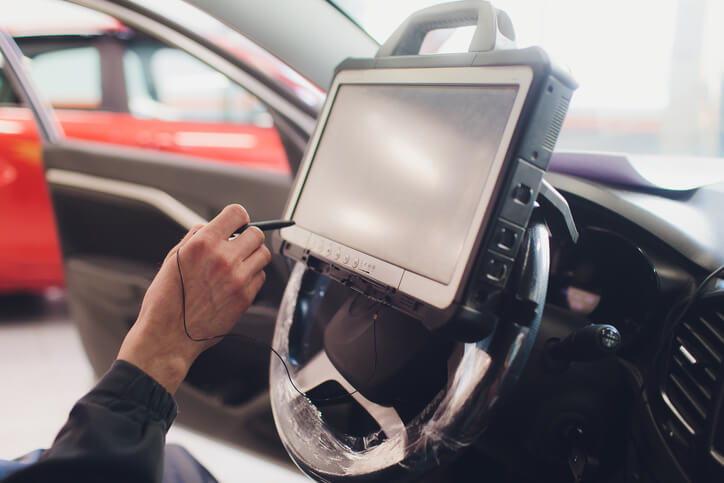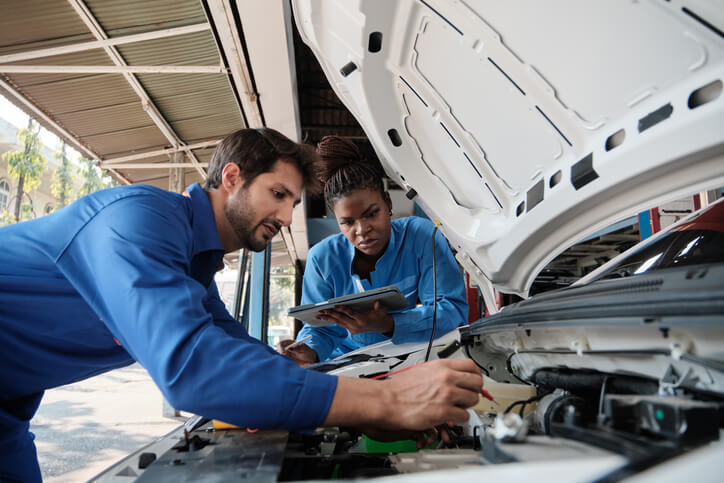Classic Cars vs. Modern Cars: How Repairs Have Evolved
Fixing cars isn’t what it used to be, and that’s what makes it exciting. Today’s auto mechanic needs to do more than turn a wrench. With classic cars running on pure mechanics and modern cars powered by sophisticated tech, the job now blends old-school know-how with digital problem-solving.
Whether you dream of restoring vintage Mustangs or decoding error messages on a Tesla, understanding how car repair has evolved is essential. At ATC Surrey, students learn to navigate both worlds and build the skills needed for a dynamic career in the auto industry.
The Simplicity of Classic Car Repairs
Classic cars, typically defined as vehicles built before the 1980s, are all about raw mechanical systems. No digital sensors. No advanced software. Just metal, wires, and good old-fashioned know-how.
Repairs on these cars rely heavily on:
- Manual diagnostics (listening, observing, testing parts directly)
- Carburetor tuning and ignition timing
- Physical access to parts without needing to remove half the engine
- A deep understanding of engine mechanics and analog components
In many ways, working on a classic vehicle teaches you the fundamentals of automotive systems. It’s mechanical problem-solving at its most basic and most rewarding.
But that simplicity comes with challenges: sourcing rare parts, dealing with rust and wear, and working without modern safety or emissions systems.

The High-Tech Reality of Modern Repairs
Fast forward to the present, and cars are essentially computers on wheels. With electronic fuel injection, onboard diagnostics (OBD-II), lane-assist systems, and even AI-powered safety features, today’s vehicles require a different kind of technician.
Modern car repair often involves:
- Using diagnostic scanners and software tools
- Understanding sensor feedback and system codes
- Navigating complex wiring systems and ECUs
- Repairing or replacing hybrid/electric power systems
This tech-focused approach is why enrolling in a program like ATC’s auto mechanic training is so valuable. You’ll not only learn traditional repair skills, but also how to use the latest tools and technologies to fix today’s vehicles.
Key Differences in the Shop
Let’s break down a few practical examples that show how far the field has come:
| Repair Task | Classic Cars | Modern Cars |
| Engine Diagnosis | Visual/manual inspection | Digital scan tools and fault codes |
| Fuel System Repair | Carburetors and fuel pumps | Fuel injectors, electronic control systems |
| Electrical Work | Basic wiring, fuse boxes | Complex electronics and onboard systems |
| Parts Replacement | Often easier to access and install | May require specialized tools and software |
Whether you’re working on a ’65 Mustang or a 2024 Tesla, one thing is clear: being a well-rounded auto mechanic means understanding both worlds.

Why Training Matters More Than Ever
At ATC Surrey, our auto mechanic training prepares you to work with everything from classic muscle cars to modern hybrids. You’ll gain the foundational knowledge needed to appreciate vintage engineering, while also learning how to diagnose and repair the latest high-tech systems.
Our hands-on approach ensures you’re not just reading about car repair—you’re doing it, every day, with real vehicles and real tools.
Future-Proofing Your Skills
The cars of the future: electric, autonomous, and connected, will only become more complex. But classic cars aren’t going anywhere either, with restoration and customization remaining popular hobbies and careers.
By understanding both classic and modern repair techniques, you can position yourself as a versatile technician capable of adapting to any challenge.
Are you looking for comprehensive automotive training?
Contact ATC Surrey for more information.


